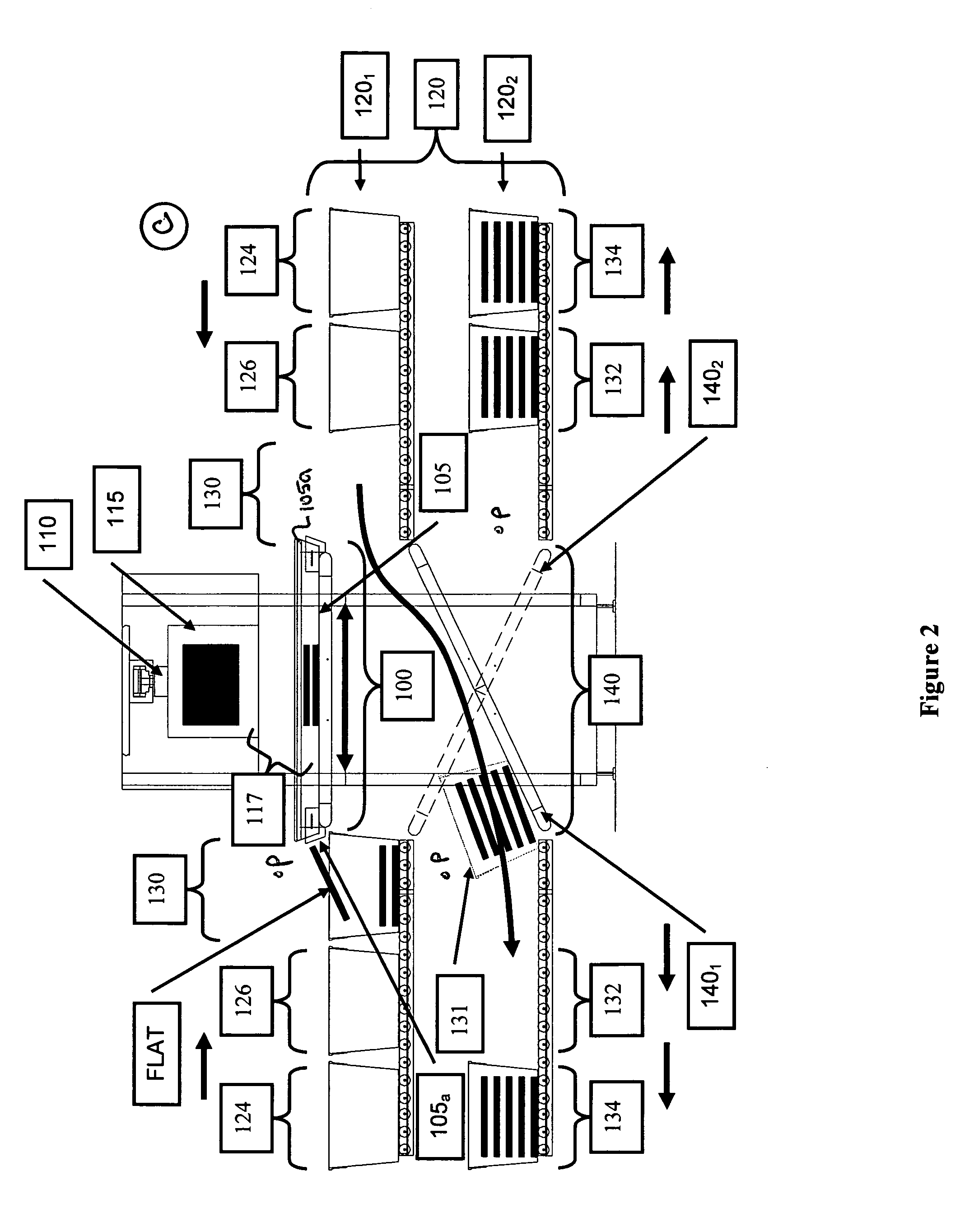Bi-directional sort mechanism and method of use
a sorting mechanism and bi-directional technology, applied in sorting, instruments, computing, etc., can solve the problems of physical inability to process mail at sufficient backbone speed to achieve a second-pass, complex sorting of mail, and time-consuming tasks
- Summary
- Abstract
- Description
- Claims
- Application Information
AI Technical Summary
Problems solved by technology
Method used
Image
Examples
Embodiment Construction
[0033] The invention is directed to a system and method for sorting and / or sequencing product in one of two sort destination areas using a single unload location. The product may be, for example, flats, parcels and other mail items (i.e., letters), for future delivery or warehousing or the like. The invention significantly reduces machine costs by allowing a single machine to sort flats and mail pieces or other disparate products, in embodiments, at two sort locations (sort destination areas) served by a single unload location. Other applications such as warehousing and storage applications are also contemplated for use with the invention.
[0034] In one aspect of the invention, the system reduces the use of valuable flooring space, while increasing the throughput of a sorter backbone. The invention further enables sorting in a continuous loop; that is, the bi-directional sort mechanism of the invention allows the system, e.g., sorter backbone, to operate in one continuous loop. The ...
PUM
 Login to View More
Login to View More Abstract
Description
Claims
Application Information
 Login to View More
Login to View More - R&D
- Intellectual Property
- Life Sciences
- Materials
- Tech Scout
- Unparalleled Data Quality
- Higher Quality Content
- 60% Fewer Hallucinations
Browse by: Latest US Patents, China's latest patents, Technical Efficacy Thesaurus, Application Domain, Technology Topic, Popular Technical Reports.
© 2025 PatSnap. All rights reserved.Legal|Privacy policy|Modern Slavery Act Transparency Statement|Sitemap|About US| Contact US: help@patsnap.com



